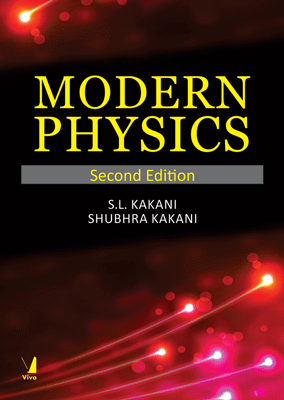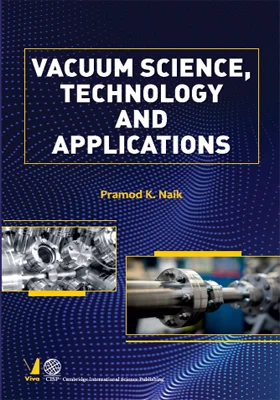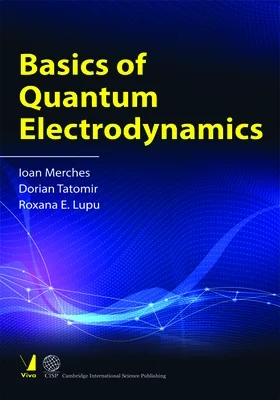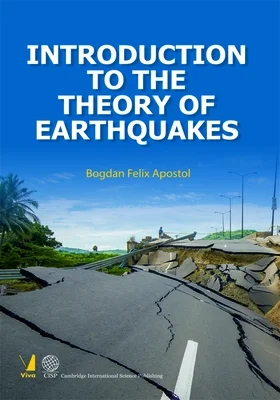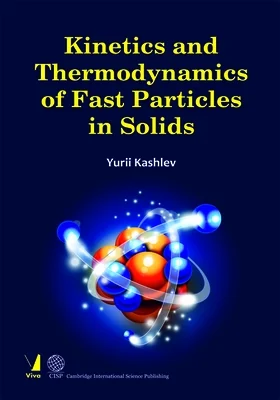Modern Physics, 2/E
Modern Physics, 2/E
₹625.50 ₹695.00 Save: ₹69.50 (10%)
Go to cartISBN: 9788130923079
Bind: Paperback
Year: 2013
Pages: 1536
Size: 172 x 242 mm
Publisher: Viva Books Originals
Sales Territory: Worldwide
Description:
Modern Physics is a comprehensive and accessible book in accordance with the latest revised syllabus prescribed by the UGC for B.Sc. (Pass and Hons.). It provides a thorough understanding of the subject with the help of concepts, mathematical derivations, applications and a good number of worked-out problems, short-answer questions, objective-type questions and exercises.
The text of the book is a detailed and systematic presentation of a wide range of topics ??? atomic, molecular spectroscopy, quantum mechanics, statistical physics, solid state physics, lasers, optical fibres, semiconductors, superconductors, general relativity, nano materials, atomic nucleus, etc. The text is updated with all recent and relevant advances.
The book is eminently suitable as a textbook for B.Sc. (Pass and Hons.) and also useful for M.Sc., B.Tech., UGC-CSIR (NET-SLET), GATE and other competitive and entrance examinations.
Target Audience:
Students and academicians of physics.
Contents:
Part A Atomic and Basics of Quantum Physics
Chapter 1 Special Theory of Relativity • Introduction • Inertial Frames of Reference • Galilean Transformations • Velocity of Light • The Search for the Ether • Michelson-Morley Experiment • Einstein's Special Theory of Relativity • Lorentz Transformations • Consequences of Lorentz Transformations • Proper Frame, Proper Length and Proper Time • Experimental Verification of Time Dilation • Relativistic Velocity Transformation Equations • Relativity of Mass • Relativistic Momentum • Mass-Energy Equivalence • Relation Between Momentum and Energy • Particles with Zero Rest Mass • Speed Limit for Material Particles • Space and Time in Relativity • Four-Vector Notation • The Velocity Four Vector • The Momentum Four-Vector • The Four-Force Vector • Relativity and Electromagnetism • Maxwell's Equations and Four Potential • The Relativistic Doppler Effect • Applications of the Doppler Effect
Chapter 2 Atomic Structure of Matter • Introduction • Thomson's Atom Model • Rutherford's Nuclear Atom Model • Hydrogen Spectrum • Bohr's Theory of Atomic Structure • Bohr's Theory of the Hydrogen Atom • Spectrum of Ionised Helium • Finite Mass Correction • Discovery of Heavy Hydrogen (Deutron) • Bohr's Correspondence Principle • Hydrogen Like Spectra • Alkali Atomic Spectra • Sommerfeld's Extension of Bohr Theory of Atom • Excitation and Ionisation Potentials • Experimental Evidence for Quantisation and Determination of Critical Potential • Types of Spectra • Emission and Absorption Line (Atomic) Spectra • Fluorescence and Phosphorescence
Chapter 3 Alkali Spectra, Space Quantization and Periodicity • Introduction • Alkali Spectra • Characteristics of Vector Atom Model • Angular Momenta and Magnetic Momenta • Orbital Angular Momentum • Electron Spin and Spin Quantum Number • Total Angular Momentum of Electron • Magnetic Moment of an Orbital Electron • Magnetic Moment Due to Electron Spin • Magnetic Quantum Numbers (ml , ms) • Spin-Orbit Interaction or Splitting • Coupling Schemes • Selection Rules • Spectral Intensity Rules • Pauli Exclusion Principle • Electron Configuration of Atoms • Periodic Table • Properties of the Elements • Spectroscopic Notation • Hund's Rules (Determination of Ground State) • Applications of Vector Atom Model • Energy of an Atom in Magnetic Field • Determination of e/m from Zeeman Effect • Anomalous Zeeman Effect (Landge's G Factor) • Paschen-back Effect • Stark Effect • Stern-Gerlach Experiment (Space Quantization) • Hyperfine Structure of Spectral Lines
Chapter 4 Molecular Spectra • Introduction • Origin of the Band Spectrum • Rotation-vibration Spectra • Rotation-vibration-electronic Spectra • Frank-Condon Principle: Intensity Distribution • Polyatomic Molecules • Experimental Studies
Chapter 5 X-Rays • Introduction • Production of X-Rays: Coolidge Tube • Properties of X-Rays • Measurement of the Intensity of X-Rays • Variation of the X-Ray Intensity with Wavelength • Origin of Continuous Spectrum • Origin of the Characteristic X-Ray Spectrum (X-Ray Peaks) • Fine Structure of X-Ray Lines • Theoretical Explanation of the Fine Structure • Auger Transitions • Moseley's Law • Absorption of X-Rays • Absorption Edges • Scattering of X-Rays • Thomson's Theory of Scattering of X-Rays • Compton Scattering • X-Ray Diffraction and Crystal as Three-dimensional Grating • Laue Equations
Chapter 6 Origin of Quantum Theory, Wave Mechanic Concepts and Uncertainty Principle • Inadequacy of Classical Mechanics • Atomic Structure and Atomic Spectra • The Franck-Hertz Experiment • Spatial (Space) Quantization: Stern and Gerlach Experiment • Limitations of Old Quantum Theory • The Wave Nature of Particles: Matter Waves • Experimental Confirmation of Particle Waves • G.P. Thomson's Experiment • Applications of Electron Diffraction • Velocities of De-Broglie Waves: Wave Packet and its Motion • Principle of Complementarity • The Uncertainty Principle • Uncertainty and Measurements • Elementary Proof of Uncertainty Principle • Applications of Uncertainty Principle • Some Remarks About Uncertainty Principle • Bohr's Correspondence Principle • Inadequacy of Quantum Theory
Chapter 7 Schrodinger Wave Equation and Principles of Quantum Mechanics • Need for a Wave Equation and Justification • Wave Equation • Wave Function and its Interpretation • Continuity Equation and Conservation of Probability or Probability Current Density • Solution of Time-Dependent Schrodinger's Equation • Free Particle System • Ehrenfest's Theorem • Stationary State Solutions • Fundamental Postulates of Quantum Mechanics • Operators • Eigen Functions and Eigen Values of Operators • Complete Set of Eigen Functions • Completeness Relation • Hermitian Operators • Adjoint of an Operator • Simultaneous Measurement and Commuting Operators • Equation of Motion for Operators • Unitary Operators • Degeneracy • Forbidden Transitions
Chapter 8 Simple Applications of Quantum Mechanics and One-dimensional Energy Eigen Value Problems • Introduction • The Step Potential (Energy Less than Step Height) • Particle in a Potential Well (One-dimensional Box) • Potential Barrier • Emission of a-Particles from a Radioactive Element • The Square Well • Periodic Potential (Kronig-Penney Model of Solids)
Chapter 9 Central Potential Problems, Hydrogen Atom and Rigid Rotator • Particle in a Rectangular Three-dimensional Box • The Rigid Rotator • Spherically Symmetric Potentials • A Particle in a Spherical Box • Three-dimensional Square Well Potential • Free Particle in Three Dimensions • Hydrogen Atom • Unsold's Theorem • Virial Theorem
Chapter 10 Harmonic Oscillator (Vibrational Motion of a Particle) • Introduction • The Three-dimensional Harmonic Oscillator (Cartesian Coordinates) • Motion of a Wave Packet
Chapter 11 Orbital Angular Momentum and Spin • Introduction • Orbital Angular Momentum Operators • Angular Momentum Commutation Relations • Eigen Values and Eigen Function of L2, and Lz • Conservation of Angular Momentum • General Angular Momentum • Electron Spin and Pauli Theory
Chapter 12 Statistical Physics • Introduction • Phase Space • Probability of a Distribution • Maxwell-Boltzmann Distribution Law • Mean, Root Mean Square and Most Probable Velocities • Equipartition of Energy • Quantum Statistics • Bose-Einstein Distribution Law • Bose?Einstein (BE) Condensation in Gases • Fermi-Dirac (FD) Distribution Law • Comparison of Three Distribution Functions
Part B Basics of Solid State
Chapter 13 Crystal Structure and Defects • Introduction • Space Lattices and Crystal Structure • Bravis Lattice • Unit Cell • Atomic Radius • Density of Crystal • Co-ordination Number • Miller Indices and Crystal Planes • Spacing of Planes in Crystal Lattices • Atomic Packing • Simple Cubic • Face Centred Cubic Lattice Structure: (FCC) • Body Centred Cubic Structure (BCC) • Hexagonal Closed-Packed Structure (HCP) • Pervoskite Structure • Liquid Crystals • Polymers • Quasi Crystals • Nanomaterials • Defects or Imperfections in Crystals
Chapter 14 Crystal Bonding • Introduction • Bonding In Crystals • Ionic Bond • Binding Energy of Ionic Crystal • Determination of the Repulsive Exponent • Covalent Bonding • Metallic Bonding • Molecular or Van Der Waal's Bonding • Hydrogen Bonding
Chapter 15 Band Theory of Solids • Formation of Bands • Wave Functions in a Periodic Lattice and Bloch Theorem • The Crystal Potential • Number of the States in the Band • Kronig Penny Model • Velocity of the Bloch Electrons and the Dynamical Effective Mass Velocity • Momentum, Crystal Momentum, and Physical Origin of the Effective Mass • Negative Effective Mass and Holes • The Distinction Between Metals, Insulators, and Intrinsic Semiconductors
Chapter 16 Lattice Vibrations (Phonons) and Thermal Properties of Solids • Introduction • Lattice Vibrations and Thermal Energy • Vibrations of One Dimensions Monoatomic Linear Lattice • Linear Diatomic Lattice • Phonons, Internal Energy and Specific Heat • Vibrational Modes of Continuous Medium (Distribution Function) • Debye Model • Electronic Contribution to the Internal Energy and hence to the Specific Heat of Metals • Thermal Conductivity of Metals
Chapter 17 Free Electron Theory of Metals • Introduction • Drude-Lorentz's Classical Theory (Free Electron Gas Model) • Sommerfeld's Quantum Model • Applicatons of Free Electron Gas Model
Chapter 18 Electrical Conductivity • Definitions and Experimental Facts • Drude-Lorentz (Free Electron) Theory of Electrical Conductivity • Boltzmann Transport Equation • Sommerfeld Theory of Electrical Conductivity • Mathiessen's Rule • Thermal Conductivity and Wiedemann-Franz Law • The Hall Effect
Chapter 19 Magnetism • Introduction • Classification of Magnetic Materials • Review of Basic Formulae • Origin of Atomic Magnetism • Dynamics of Classical Dipole in Magnetic Field • Magnetic Susceptibility • Phenomenon of Diamagnetism • Paramagnetism • Langevin's Classical Theory of Paramagnetism • Ferromagnetism • Temperature Dependence of Saturation or Spontaneous Magnetisation • The Paramagnetic Region • The Nature of Ferromagnetic Carriers • Nature and Origin of Weiss Molecular Field • Heisenberg's Exchange Interaction: Quantum Theory of Ferromagnetism • Relation Between J0 and • ? Ferromagnetic Domains • Magnetostriction
Chapter 20 Superconductivity • Introduction • Experimental Features of Superconductivity • The Isotope Effect and Electron-phonon Interaction • The Effect of the Superconducting Transition on the Properties • Special Features of Superconductors • Theoretical Survey • Flux Quantization • BCS Theory of Superconductivity: Cooper Pairs • High Temperature Superconductivity • Main Properties of Copper Oxide Superconductors • Electron Superconductors • Copper Free High-Tc Oxide Superconductors • Alkali Metal Doped C60 Fullerenes Superconductors • Iron-Pnictide Superconductors • Nanoscale Superconductivity • Color Superconductivity • Mechanisms of High-Tc Superconductivity • Conclusions • Tunnel Effect in Superconductors [Josephson Effects] • Applications of Superconductivity
Chapter 21 Semiconductors and Semiconductor Devices • Introduction • Atomic Structure and Energy Level • Energy Bands • Conductors, Semiconductors and Insulators • Fermi Level • Intrinsic Semiconductors • Extrinsic Semiconductors • Important Properties of Extrinsic Semiconductors • Semiconductor Devices • P-N Junction • Forward and Reverse Biasing • Volt-ampere Characteristics of P-N Junction • Static and Dynamic Resistance of a Diode • Space Charge (or Depletion Region) Capacitance • Effect of Temperature on P-N Junction Diodes • Zener Diode • Tunnel Diode • Photodiode • Light-emitting Diode (LED) • Varactor Diode • Schottky Diode • Step Recovery Diodes or Charge Storage Diode or Snapback Diode • Backward Diode • Thermistors and Barretters • Photoconductor • Gunn Effect and Gunn Diode • Impatt, Trapatt and Qwitt Diodes • Pin Diodes • Hall Effect • Transistor • Semiconductors in Computers • Integrated Circuits (ICs) • Micro Electromechanical Systems (MEMS) • Quantum Dots (QDs) • Spintronics
Chapter 22 Lasers • Introduction • Important Properties of Laser Light • Einstein's Theory of Atomic Transitions and A and B Coefficients • Principle of Laser • Population Inversion by Pumping • Optical Resonators • Gain Constant • Amplification of Light and Threshold Condition • Varieties of Lasers • Applications of Lasers • Holography
Chapter 23 Optical Fibres • Introduction • Total Internal Reflection • The Optical Fibre • The Coherent-Bundle • Classification of Optical Fibres • Advantages of Optical Fibres • Types of Rays • Modes of Propagation in Optical Fibre • Dispersion-inter Model Dispersion • Losses in Optical Fibre Cable • Optical Fibre Communications System • Photo Detector • Optical Fibre Cable Construction • Cable Construction • Applications of Optical Fibres
Chapter 24 Nanomaterials • Introduction • Nanoscale Miracles • Study of Nanoscale Materials • Quantum-DOT • Quantum Wire or Nanowire • Modelling of Quantum Size Effect • Surface and Interface Effects • Properties of Nanomaterials • Carbon Nanotubes (CNTS) • Experimental Studies: Raman Spectroscopy • Haeckelites • Key Issues in Nanomanufacturing • Nanostructures in Motion • Nanomaterial Advantage • Applications of Nanotechnology • Limitations of Nanotechnology
Chapter 25 Atomic Nucleus • Atomic Nucleus (The Nucleus as a Part of the Atom) • Atomic Number, Mass Number and Isotopes • Nuclear Binding Energy • Binding Energy • The Deutron(12H) • Radioactivity • Alpha, Beta and Gamma Decay • Nuclear Force • Stable Nuclei or Nuclear Stability • Nuclear Models • Nuclear Reactions and Q Value • Artificial Transmutation or Artificial Disintegration • Artificial Radioactivity • Radioisotopes • Nuclear Reactions • Nuclear Fission • Nuclear Reactor or Nuclear Pile • Nuclear Fusion or Thermo-Nuclear Reactions • Comparison Between Fission and Fusion • Nuclear Detectors • Particle Accelerators • Nuclear Stability
Chapter 26 Elementary Particles • Introduction • Fundamental Interactions or Forces in Nature • Dawn of Particle Physics • Particles and Antiparticles • Classification of Elementary Particles • Particle Instability • Conservation Laws • Resonance Particles • Quark Model • The Standard Model • Grand Unified Theory
Chapter 27 General Relativity • Introduction • Principle of Equivalence • Tests of General Relativity • Gravitational waves • Black Holes • Frame Dragging • Gravity Probe B (GP-B)
Chapter 28 Cosmology • Introduction • Evidence of the Big Bang • Hubble's Measurements • The Cosmic Microwave Background Radiation • Nucleosynthesis • The Big Bang • The Early Universe • The Inflationary Universe • Dark Matter, Dark Energy and Future of the Universe • Understanding the Universe • Steller Evolution and Ultimate Fate • Planck's Time, Length and Mass • Suggested Readings • Index
About the Authors:
S.L. Kakani, M.Sc. (Phys.), Ph.D., former Executive Director, Institute of Technology and Management, Bhilwara, is an internationally renowned physicist and has had a distinguished career spanning more than four decades of teaching, research and administration. He is the author of several standard works. His two research monographs on superconductivity have been published by NOVA Science, New York, and recently four books of his have also been published by Anshan Ltd. UK. He has authored a large number of research papers in the fields of superconductivity, nanomaterials, condensed matter physics, material science, etc. He has supervised Ph.D. theses in the field of superconductivity and thin films.
Prof. Kakani served as the Chairman, BOS and Research Board, MDS University, Ajmer. He is Visiting Professor at several prestigious institutions. He has received several national and international awards and honours for his outstanding academic contributions and achievements. He is a life member of IAPT, Vigyan Parishad and High-T, update.
Shubhra Kakani, received her M.Sc. in Physics and Ph.D. from MDS University. She has co-authored more than nine books, namely Problems on Advanced Quantum Physics, Thermal Physics, Superconductivity, Modern Physics, Nuclear and Particle Physics, Mechanics, Engineering Physics, A Textbook of Engineering Physics, ICSE Physics, etc. Presently she is pursuing her post-doctoral research.
